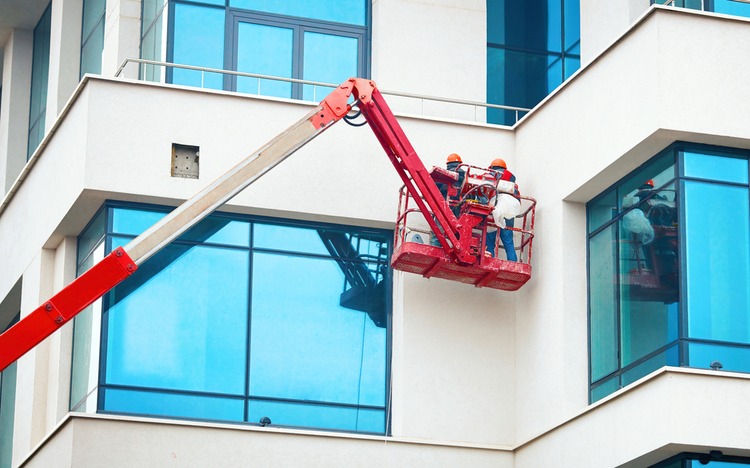Energy efficiency indicators to look for in modern highrise residential buildings
Understanding energy efficiency in highrise residential buildings helps renters and owners assess long-term utility costs, maintenance expectations, and comfort. This overview highlights practical indicators to check when evaluating a modern apartment building, relevant to leasing, tenancy arrangements, and budgeting decisions for both shortterm stays and longer expat placements.

When evaluating a modern highrise apartment, energy performance is more than an environmental talking point — it affects monthly utilities, maintenance patterns, and indoor comfort in local climate conditions. Prospective tenants and lessees should look beyond marketing claims to tangible indicators such as HVAC efficiency, building envelope quality, and energy management systems. These elements influence servicefees, the likelihood of unexpected maintenance, and total cost of living during a tenancy, so they matter whether you are negotiating contracts or planning a deposit and ongoing budgeting.
How does highrise design affect energy use?
Highrise orientation, facade design, and floor-plan depth shape how much heating or cooling is needed. Buildings with thoughtful sun shading, staggered balconies, or double-skin facades can reduce solar gain in hot climates and retain warmth in cooler months. Structural features like atria or green roofs moderate microclimates and can reduce mechanical load. For an expat or longterm tenant, a building that integrates passive design means lower utilities and less strain on HVAC systems, which in turn reduces routine maintenance calls and potential servicefees passed through tenancy contracts.
What systems reduce utilities and maintenance?
Look for high-efficiency HVAC units, variable refrigerant flow (VRF) systems, or district cooling connections in markets where district services are available. Smart thermostats, submeters for individual apartments, and timed common-area controls (lighting, lifts, pool pumps) all lower energy waste. These systems also simplify billing transparency, helping with budgeting and clarifying which costs are included in servicefees versus utilities billed to individual tenants. Well-documented maintenance schedules and clear tenancy clauses about equipment upkeep indicate fewer surprises for deposits and repair responsibilities.
How do windows and insulation save energy?
Glazing type, window-to-wall ratio, and insulation quality are direct indicators of a building’s thermal performance. Low-emissivity (low-E) glass and insulated frames reduce heat transfer, improving comfort and cutting cooling needs in warm climates. Properly sealed windows and continuous insulation reduce drafts and humidity ingress, which helps preserve interior finishes and lowers maintenance frequency. In highrise contexts, paying attention to balcony doors, glazing seals, and the presence of thermal breaks can reveal whether the building will keep utilities predictable across seasons.
What role does building management play in tenancy?
Active building management that tracks energy consumption, enforces regular maintenance, and publishes energy performance data improves outcomes for tenants. Effective management negotiates service contracts that can lower collective costs and handle warranty claims. For leasing and contracts, ask how servicefees are calculated, whether they cover preventive maintenance, and how deposit disputes involving fixtures or HVAC are resolved. Transparent management lowers the risk that tenants will absorb large, unanticipated maintenance bills during their lease term.
How to consider commute, transit, and neighborhoods?
Energy efficiency extends beyond the building: proximity to public transit, walkable neighborhoods, and mixed-use amenities reduce reliance on private vehicles and the associated energy footprint of daily life. Consider transit connections, average commute times, and local microclimate when assessing total living costs. Shorter commutes can cut transport expenses and carbon exposure, which is relevant for budgeting and lifestyle choices whether you are on a shortterm assignment or settling in as an expat.
What to factor into budgeting, deposits, and furnishing?
When estimating total cost of occupancy, include likely utilities, servicefees, and any additional maintenance contributions specified in contracts. Furnishing choices also affect energy use: LED lighting, energy-star appliances, and efficient water fixtures lower ongoing costs. Check tenancy agreements for clauses about deposit deductions related to damage from improper appliance use or alterations. For shortterm tenancies, verify which services are included; for longer leases, prioritize buildings with energy reporting or submeters that help tenants control and predict bills.
In summary, energy efficiency in modern highrise residential buildings is measurable through design features, systems, and management practices that together influence utilities, maintenance needs, and affordability. Tenants should evaluate HVAC and glazing specifications, metering and building controls, and transparency in servicefees and contracts. Considering neighborhood transit options and furnishing choices completes a practical picture of how a building’s energy performance will affect everyday life, budgeting, and tenancy experience.






